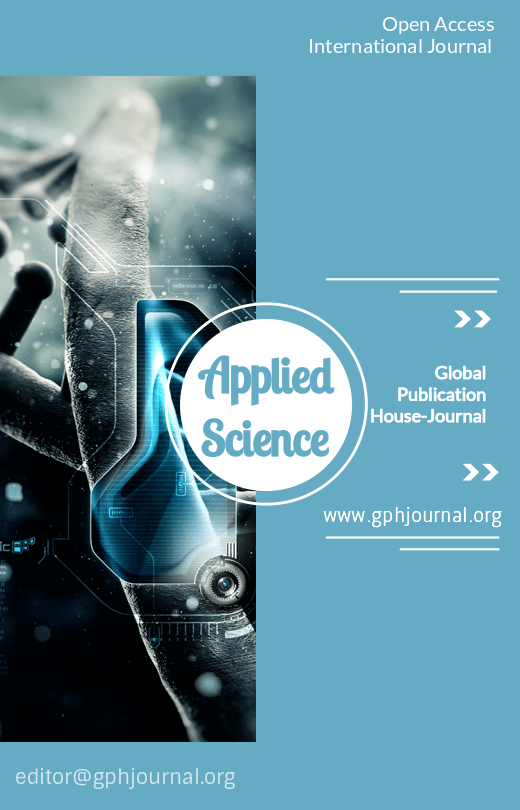Fecundity of the invasive Hepu mitten crab, Eriocheir hepuensis Dai, 1991 (Grapsoidea: Brachyura) from Shatt Al- Arab and Arabian Gulf. Iraq
Abstract
The present study was carried out to investigate the fecundity of species of Branchyuran crustaceans Eriocheir hepuensis Specimens were collected from different regions of Shatt-Al-Arab river, North-West Arabian Gulf and Khour Abdulla during the period from Autumn 2016 to Summer 2017 by fishing trawl net. The total wet weight of specimens ranged between (92.27-199.27) gm. The crab’s carapace lengths were between (4.2 - 9.4) cm. Absolute fecundity was found to be from (252331.4 – 1636153.4) eggs/female. The relative fecundity ranged between (2181 – 13440.1) eggs/gm. The correlation values at the probability level of 0.05 between absolute fertility rate with carapace width and total weight were r=0.93,r=0.96 respectively.
Eggs development stages in E.hepuensis crabs are divided into seven stages. The objective of this study was to measurements the fecundity for assessing population reproductive dynamics and energetics and for estimating the annual reproductive output and how it is linked to recruitment and population growth.
Downloads
References
Cohen, A.N. & Carlton, J.T. (1998). Accelerating invasion rate in a highly invaded estuary. Science 279:555-558.
Cooper, W.T.; Barbieri, L.R.; Murphy, M.D. and Lowerre- Barbiere,S.K. (2013).
Assessing stock reproductive potential in species with indeterminate Fecundity: effects of age truncation and size-dependent reproductive Timing. Fisheries Research. 138:31-41.
Darnell, M.Z.; Rittschof, K.M.; Darnell and Mc Dowell, R. E.(2009). Lifetime Reproductive Potential of female Blue Crab, Callinecectues sapidus in North Carolina, USA, Marine, Ecology, progress series 394: 153-163.
Dickinson, R.E.; K.W. Oleson; G. Bonan; F. Hoffman; P. Thornton; M. Vertenstein; Z.-L. Yang and X. Zeng. (2006). The Community Land Model and its Climate Statistics as a component of the Community Climate System Model, Journal Climate. (19). 2302-2324.
Fischer, S.; Thatje, S.; Graeve,M.; Pasche,K. and Kattner, G. (2009). Bioenergetics of early life- history stages of the brachyuran Crab, Cancer setosus in response to changes in temperature. Journal Exp. Marine. Biol. Ecol. (374): 160-166.
Hashim, A. A. (2010). Occurrence of the Chinese Mitten Crab Eriocheir Sinensis (H.Milne Edwards) in south Iraq. Mesopot. Journal. Marine. Sci. 25 (2):31- 36.
Hendrickx, M.E. and Guerrero, M.G.(2004). Embryology of Decapod Crustaceans I. Embryonic Development of the Mangrove Crabs Goniopsis Pulchra and Aratus Pisonii (Decapoda: Brachyura). Journal of Crustacean Biology 24(4):666-672.
Hymanson, Z.; Wang, J., and Sasaki, T. (1999). Lessons from the home of The Chinese mitten crab. IEP Newsletter 12: 25-32.
Kangas, M.I. (2000). Synopsis of the biology and exploitation of the blue swimmer crab, Portunus pelagicus Linnaeus, in Western Australia. Fish. Res. Rep. Fish. West Aust. 1, 121: 1-22.
Kumar,M.S.; Xiao,Y.;Venama,S. and Hooper,G.E.(2003).Reproductive cycle of blue swimmer crab, portunus pelagicus of southern Australia. Journal.Marine Bio.Ass.UK. 83 (05):983-994.
Litulo, C.(2004). Fecundity of the Pantropical fiddler Crab, Uca annulipes (H.ilne Edwards, 1837) (Brachura: Ocypodiae) at Coast do sol Mangrove, map up ton Bay, Southern Mozambique, Western Indian Ocean. Journal.Marine Sci. 3:87-91.
Lowe S., Browne M., Boudjelas S.and De Poorter M. (2004) 100 of the world’s worst invasive alien species. A selection from the global invasive species database. Published by The Invasive Species Specialist Group (ISSG) a specialist group of the Species Survival Commission (SSC) of the World Conservation Union (IUCN).
Muino,R.(2002). Fecundity of Liocarinus depurator (Brachyura, portunidae) in N the Rio de Arousa (Galicia, north- west Spain). Journal Marine Biol. Ass. UK (82):109-116.
Naderloo, R. (2017). Atlas of the Persian Gulf. Springer International Pubulishing. pp 978.
Naser, M. D., Page, T. J., Ng, N. K., Apel, M., Yasser, A. G., Bishop, J. M., Ng, P.K.L., & Clark, P. F. (2012). Invasive recordsof Eriocheir hepuensis Dai, 1991 (Crustacea: Brachyura: Grapsoidea: Varunidae): Implications and taxonomic considerations. BioInvasions Record, 1, 71–86 .
Ng, P.K.L.; Guinot, D. and Davie, P.J.F. ( 2008). Systema brachyurorum: part I. an annotated checklist of extant brachyuran crabs of the world. The raffles bulletin of zoology, 17: 1–286.
Parimalam, K. (2001). Embryonic and larval development of the hermit Crab, Clibanarius longitarsus (de Haan) (Crustacea: Decapoda: Anomura). MSc. Thesis, India: Annamalai University.
Ramirez-Liodra, E. (2002). Fecundity and life- history strategies in Marine
invertebrates. Advances in Marine Biology. (43):87-170.
Sarker, M.M.; Islam, M.S. and Uehara, T. (2009). Artificial insemination and early
Embryonic development of the Mangrove Crab, Perisesarma bidens (de Haan) (Crustacea: Brachyura). Zoological Studies, 48: 607- 618.
Sethi, S.N.; Ram, N. and Venkatesan, V. (2014). Reproductive Biology of Macrobrachium lar (Fabricius, 1798) in Andaman Island. Indian Journal Of Geo. Marine Sci. 43 (12) 2269-2276.
Sigana, D.A. 2002. Breeding cycle of Thalamita crenata (Latreille, 1829) Gazi
Creek (Maftaha Bay), Kenya. Western Indian Ocean Journal of Marine Sci. 1: 145-153.
Walker, P.J. and Mohan, C.V. (2009). Viral disease emergency in shrimp Aquaculture: Origins, Impact and the effectiveness of health management Strategies. Aquaculture, (1): 125-154.
Zhang, T.; Li, Z.; and Cui, Y. (2001). Survival, growth, sex ratio, and Maturity of the Chinese mitten crab, (Eriocheir sinensis) reared in a Chinese pond. Journal. Fresh. Ecol. 16(4): 633-640.
Copyright (c) 2023 Intisar M.A.Jabbar, Salah M. Najem, Entesar N. Sultan

This work is licensed under a Creative Commons Attribution-NonCommercial-NoDerivatives 4.0 International License.
Author(s) and co-author(s) jointly and severally represent and warrant that the Article is original with the author(s) and does not infringe any copyright or violate any other right of any third parties, and that the Article has not been published elsewhere. Author(s) agree to the terms that the GPH Journal will have the full right to remove the published article on any misconduct found in the published article.























